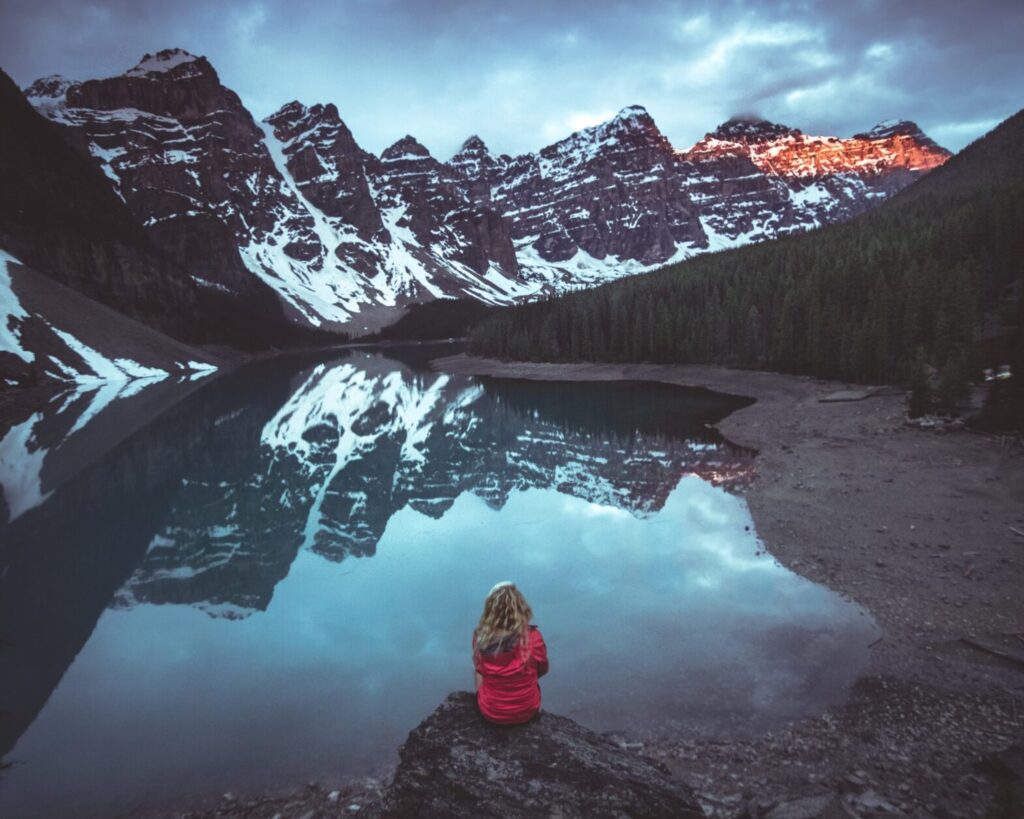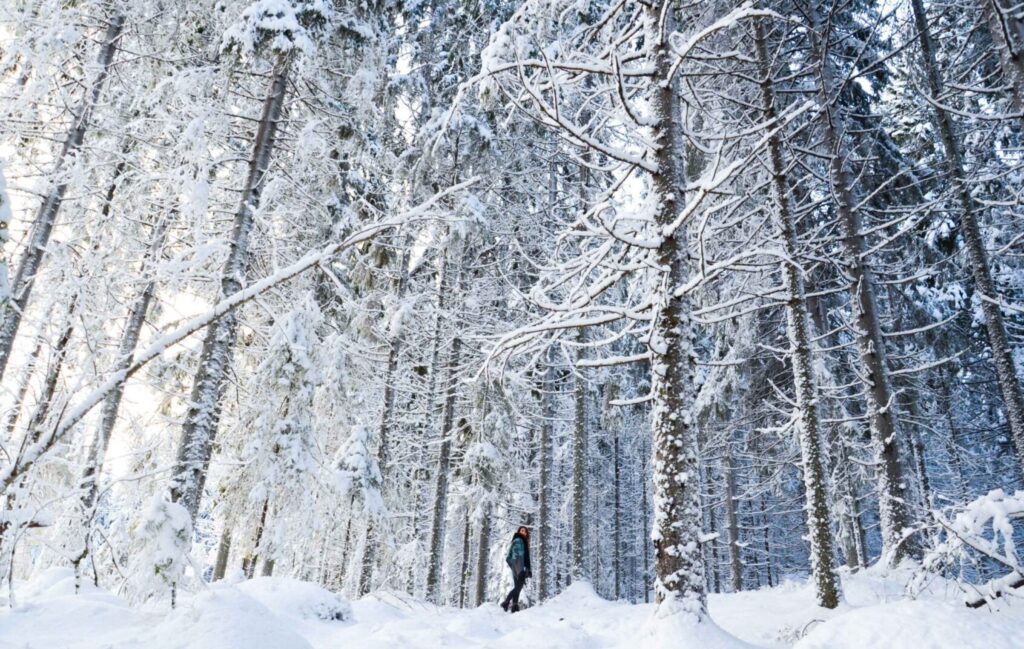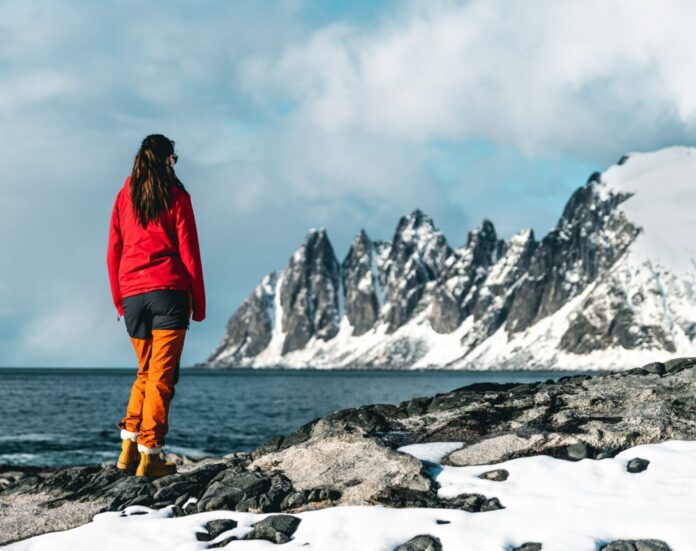Stay Warm & Dry with These Winter HikingTips
One of my goals for the upcoming winter is to get out into nature more often: taking more walks in the woods and building to longer hikes. To motivate me, I began the 52 Hike Challenge. Well, here I am, firmly in the grips of autum with rain, snow and short winter days on the way.
The rain I can deal with. Being a Washington State native it literally comes with the territory. But the cold? I’ll be the first to admit that I don’t like to be cold. So I need to make sure I have no excuse for brushing off this hiking challenge. I need to be prepared for all the cold hiking days!
If you don’t want to wait until late spring to get out into the woods either, here are my tips for staying warm and dry on the trail.

Onions
A Canarian friend of mine says that the Quebecians (Quebecois?) have a saying,
A solid layering system includes a base layer that wicks perspiration away from your skin (think long johns), a mid layer that insulates you from the cold (like a wool sweater or thin down coat), and a shell layer that keeps wind and moisture out (coat and pants). The goal with layering is to add and remove layers throughout your hike so you can stay warm and comfortable without overheating and getting sweaty. It can feel like a chore to stop and change clothes, but it’s really important to stay dry. Getting wet on a cold day can lead to hypothermia. (learn the symptoms and treatment for hypothermia here )
It may seem counterintuitive, but start your hike dressed cooler than you you’d like, packing your third layer for later. Depending on the weather, you may want to keep a shell on and pack your middle layer, or vise versa. As soon as you start hiking, you will warm up. This will have two effects: motivate you to keep moving until you warm up, and prevent you from having to stop too soon to take a layer off.
Cotton Kills
OK, that may be a bit hyperbolic, but you should still ditch the cotton in winter. When cotton gets wet, it stays wet and heavy, which can leave you feeling damp, cold and miserable. Synthetic and wool layers dry much faster and will move perspiration away from your skin. This is super important in keeping your feet happy, and you won’t be hiking far in any weather with unhappy feet. Nothing holds warmth even when wet like wool, and frozen toes are painful. (learn about frostbite here )
Snack on the go
Take snacks you can eat without stopping. Stopping to sit and eat a cold lunch, like a sandwich, will let you core temperature fall and you will get chilled. Instead, bring multiple snacks that are easy to eat while still moving, like granola bars and nuts. Keep your core warm by packing a thermos of hot soup, chile, cocoa or tea.
Hydrate inside and out
Dry, cold winter air is far more dehydrating than you realize. Bring more water than you think you might need and drink often, even before you feel thirsty. Because winter air is dry, also prepare by applying lotion and/or sunscreen before heading out and bring lip balm. My lips always get chapped on a winter hike.

The early bird gets the great hike?
Or maybe not, but that’s OK. Plan a day hike out in the woods that is small and early, and be prepared to turn around. Winter hiking can take longer than you might expect. You will stop more frequently to eat, drink, and add or subtract layers. Encountering snow, ice, and muddy trails will also slow you down.
Remember that the sun also sets much earlier in the winter, so plan a shorter hike than you would in the summer, start out early in the day, and be OK with stopping and turning around if you are running out of time, food or water. Better to cut your hike short than to risk serious injury or worse on the trail.
Don’t be a cheapskate
Invest in good gear. I know that quality winter gear is expensive, but being wet and cold out on the trail is miserable and potentially very dangerous. Hypothermia and frostbite are not to be scoffed at. Second-hand outdoor shops are a great place to find gently used gear a fraction of the “new” price. I also highly recommend REI. The staff is very knowledgeable and their return policy is exceptional.
Buffs & Gaiters
A few specialized items to add to your cold and wet weather outdoor wardrobe are buffs and gaiters. I know that sounds like a hipster bar, but they are actually really useful things.
A Buff is a seamless, tubular, multi-functional headgear. They can be used as a scarf, headwrap, headband, facemask, etc. BUFF® is a specific brand, though the word can be applied to any headgear of this style. These things are so versatile and useful in any weather that I never go adventuring anymore without one.
Gaiters are worn over your shoes and lower pant legs, like leg-warmers but waterproof and less flashy. They are used to provide additional protection and insulation for your lower legs when walking in wet or snowy conditions. Gaiters keep rain and snow out of your boots, keeping your socks and therefore your feet and boots dry.
I hope you’ve found some of these winter hiking tips helpful. If these tips help you feel more prepared for a winter’s





